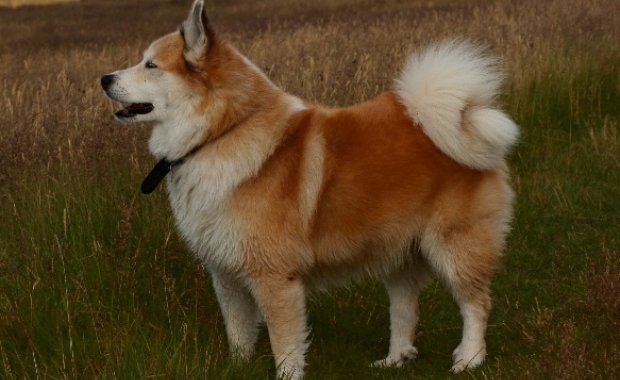Small, hardy and happy; so are the characteristics of the Icelandic sheep dog, a breed of dog brought to Iceland by the Vikings. A British nobleman and Icelandophile named Mark Watson is credited for saving the breed from extinction 70 years ago. His birthday, the 18th of July, is now known as the ‘Day of the Icelandic Sheep Dog’ (Dagur íslenska fjárhundsins).
Read more:Dog adopts tiny orphaned kitten
The breed is characterised by long, thick fur, pointed ears and a curly tail. The dogs were extremely useful for herding but also served as watchdogs, which means they will bark loudly when they see someone approaching. The dogs are considered very loyal and sociable and make for good family pets.
The breed was long favoured by the British aristocracy in the 16th century and is mentioned in Shakespeare’s ‘Henry VIII’.
The breed nearly faced extinction in the 20th century due to numerous reasons. When travelling the country in the 1950’s, Mark Watson noticed that very few Icelandic sheep dogs were left in the country. Only a few were found in remote locations such as the Westfjords. With the help of Páll A. Pálsson, the chief veterinary officer in Iceland at the time, Watson managed to export a number of dogs to the U.S. for organised breeding. In the 1960’s, Páll and a woman named Sigríður Pétursdóttir began organised breeding at the farm Ólafsvellir in Skeiðahreppur, South Iceland.
Small, hardy and happy; so are the characteristics of the Icelandic sheep dog, a breed of dog brought to Iceland by the Vikings. A British nobleman and Icelandophile named Mark Watson is credited for saving the breed from extinction 70 years ago. His birthday, the 18th of July, is now known as the ‘Day of the Icelandic Sheep Dog’ (Dagur íslenska fjárhundsins).
Read more:Dog adopts tiny orphaned kitten
The breed is characterised by long, thick fur, pointed ears and a curly tail. The dogs were extremely useful for herding but also served as watchdogs, which means they will bark loudly when they see someone approaching. The dogs are considered very loyal and sociable and make for good family pets.
The breed was long favoured by the British aristocracy in the 16th century and is mentioned in Shakespeare’s ‘Henry VIII’.
The breed nearly faced extinction in the 20th century due to numerous reasons. When travelling the country in the 1950’s, Mark Watson noticed that very few Icelandic sheep dogs were left in the country. Only a few were found in remote locations such as the Westfjords. With the help of Páll A. Pálsson, the chief veterinary officer in Iceland at the time, Watson managed to export a number of dogs to the U.S. for organised breeding. In the 1960’s, Páll and a woman named Sigríður Pétursdóttir began organised breeding at the farm Ólafsvellir in Skeiðahreppur, South Iceland.







